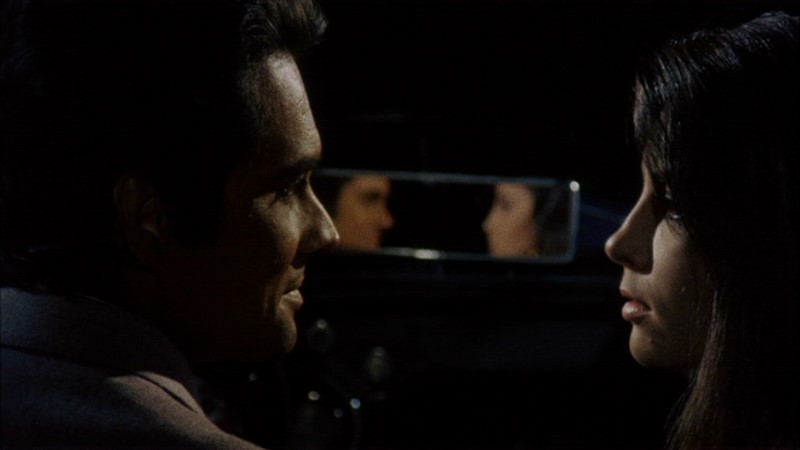Mario Bava’s Rashomon-Influenced Sex Comedy Remains Puzzling
DIRECTED BY MARIO BAVA/ITALIAN/1971
BLU-RAY STREET DATE: JANUARY 15, 2019/KINO CLASSICS
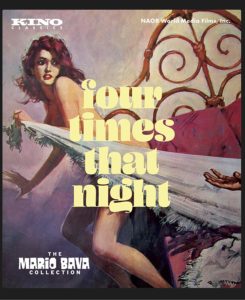
For the great Italian director Mario Bava, history remembers horror as having been his bag- though often, it was just the bag he ended up holding. It’s true that Bava’s penchant for the spooky and macabre is rarely surpassed, even today, nearly forty years postmortem. It’s also true, though, that Bava’s filmography widely transcended the horror genre, as he also helmed Westerns (Roy Colt & Winchester Jack), colorful spy capers (the iconic blast Danger: Diabolik), adventure films (Knives of the Avenger), and more. And, in the case of 1971’s Four Times That Night, a swingin’ sex comedy.
“The title is suggestive…The movie is hilarious…Rated R for uproarious!!!” So went the tagline for Four Times That Night (or, Quante volte… quella notte or, Vier Mal heute Nacht). In a sense, it tells us all we need to know about the film’s intentions… and its precision. Purely from a spelling standpoint, “R for uproarious” is simply downright embarrassing, though the title is suggestive… Is the movie hilarious? It tries on some respects, though your mileage in terms of laughs per minute will, no doubt, vary. Grasping the libidinous dug-in Italian male mindset of the time might help one not to come away completely appalled. Might. These are the film’s own terms.
Four Times That Night stars Daniela Giordano as Tina Brandt, a lovely young lady who, during a sunny dog walk in the park, catches the eye of playboy Gianni Prada (Brett Halsey). Though she does what she can to avert the catcalling skirt-chaser, his persistence lands him a date with the nice young lady.
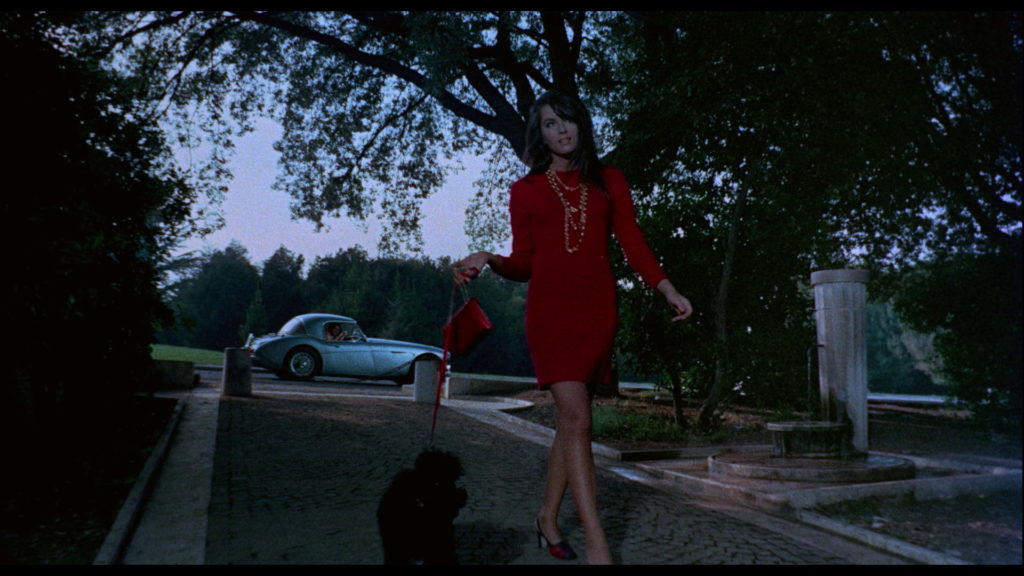
From here, the film veers into its infamous emulation of Akira Kurosawa’s Rashomon. In that seminal film, the tragic rape and murder of a local woman is investigated via four separate recollections, each of which plays out onscreen. The truth is left unsorted.
Bava, working from a screenplay by Mario Moroni and Carl Ross, grafts the same structure onto Tina’s and Gianni’s date, resulting in four wildly different versions of what happened when the pair got back to his bachelor pad, which is well equipped with custom furniture to sprawl out on, and a sex swing. Why, why, why did she come away with mussed hair and a torn dress? And when exactly did she leave his place?
Her version of the night is a straight-up #metoo case study (which really began the moment he started harassing her in the park, though in the film’s 1971 Italian male parlance, that’s just a randy fella being a randy fella).
Anyhow- if there’s a point in Four Times That Night where Bava does lean into horror, this is it. In what becomes a reoccurring mention, Gianni refers to himself as “Dracula” and Tina as “Snow White”. Hmm. In this scenario, told from Tina’s point of view to her concerned mother, Gianni foisted himself upon her, going as far as to tear her dress. She barely escapes with her dignity intact. Oddly enough, her mother seems genuinely bummed that her daughter was unable to get lucky with a nice man. Ewww?
Gianni of course does get much luckier in the next version of the evening, as it’s his recollection told to his buddy. By far the sexiest portion of the film, this is where exploitation queen Giordano really gets to smolder. By turns, Halsey fades into his character’s own mid-century modern woodwork. Standing in stark difference to Tina’s take which precedes it, this is where Bava blatantly sells the movie, if not Gianni’s story. It’s probably safe to say that most people can recognize a Penthouse letter-lite when they see one re-enacted.
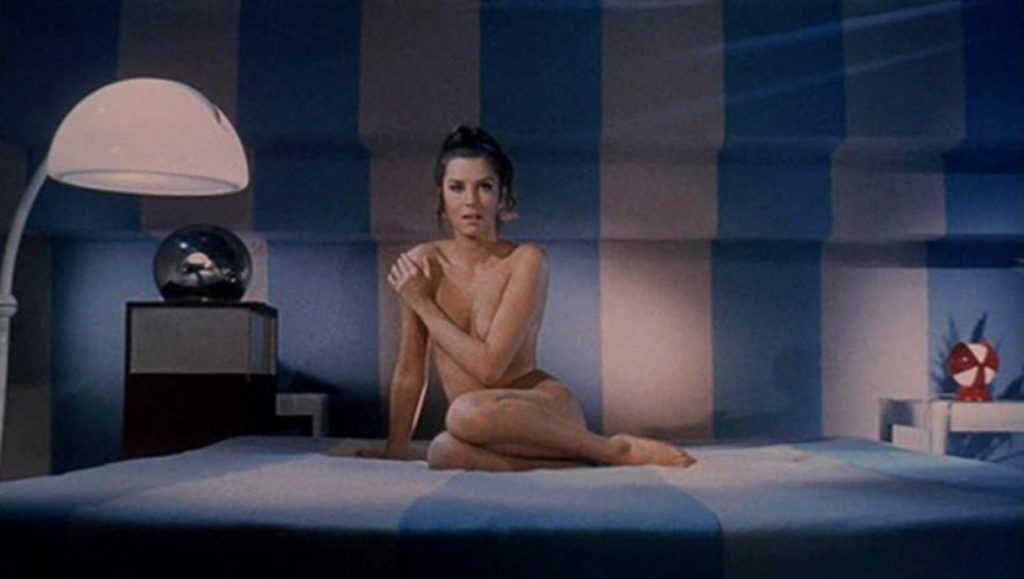
Next up is the recollection of the pervy comic relief doorman (Dick Randall). Well aware of Gianni’s reputation and penchant for female company, he goes out of his way to play peeping tom once he sees Tina being escorted in. Lots of nutty business with the doorman having to rush up and down stairs and whatnot, but on the whole, this is the least memorable of the three segments. The mere fact that the screenplay must resort to an unreliable character lurking in the margins is indication that there’s not enough meat on the narrative bones of Four Times That Night; certainly in terms of its Rashomon model. Anyhow, things take an unexpected turn when another guy shows up in Gianni’s room, ready to figure into the action. How, exactly, in homophonic 1971 Italy, does this element land? Semi-surprisingly, but generally flat.
Finally, to round out the titular count of four, we get a tacked-on summation by a heretofore mostly absent narrator. It’s a quick bit of postproduction snip and snap, billowing after everything else like the limp tail of a kite. If nothing else, this wrap-up harkens back to the opening credits sequence, which by this point has been revealed as completely misleading. The film opens with bursts of arbitrary 1960’s stock animation (a murder? Zany running around?) and color-filtered looks at this apparent absentee narrator doing wacky things. It only goes to show that for Bava, he really wasn’t interested in any of this.
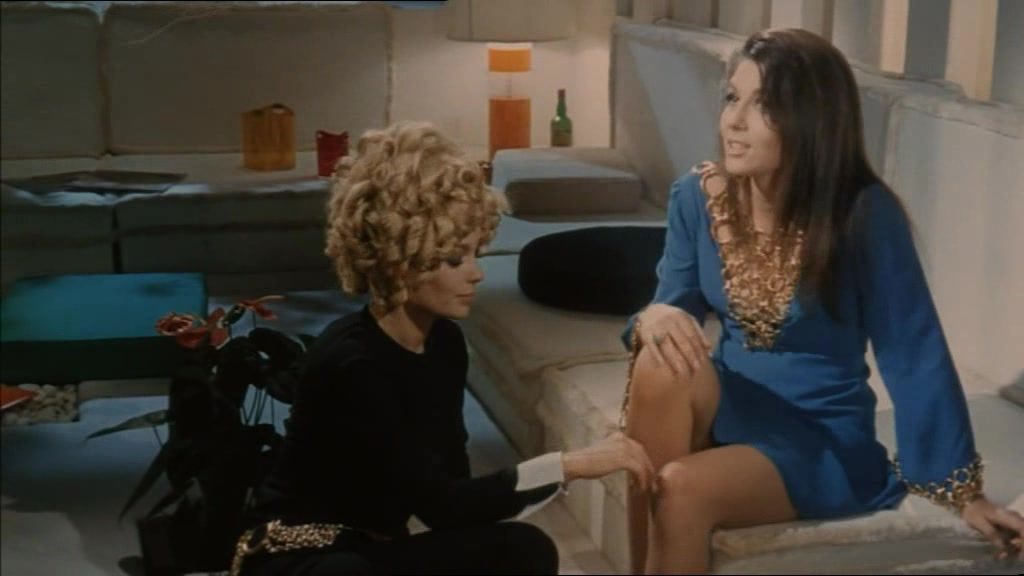
Though the A/V quality of this new Blu-ray edition of Four Times That Night has garnered some acclaim, apparently besting all previous home releases, these accolades are frankly confounding. Granted, Four Times That Night apparently has suffered some legitimate wear and tear over the years. But the fact is that despite whatever improvements we’re seeing on behalf of Kino Lorber’s high-definition treatment, the image remains washed out and faded, with a chronic humming sound underlying the Italian language track. (The Italian track with English subtitles being the language option of choice here, seeing how the English track, also available, is a poor affair). Bava-master Tim Lucas (who literally wrote the book on the filmmaker) provides the type of info-rich commentary track for which he’s come to be known. It’s a satisfyingly solid tour down this road less travelled for Bava.
Though Four Times That Night has no shortage of temptations intended to lure viewers, it’s an ultimately very minor entry in a great director’s all-to-often struggle-ridden career. Sleepy in terms of performance and direction, the film wields it’s Kurosawa roots the way that Last House on the Left wields it’s Bergman roots, as it’s most visible virtue. This is a date best intended for Mario Bava and Daniela Giordano enthusiasts only.


